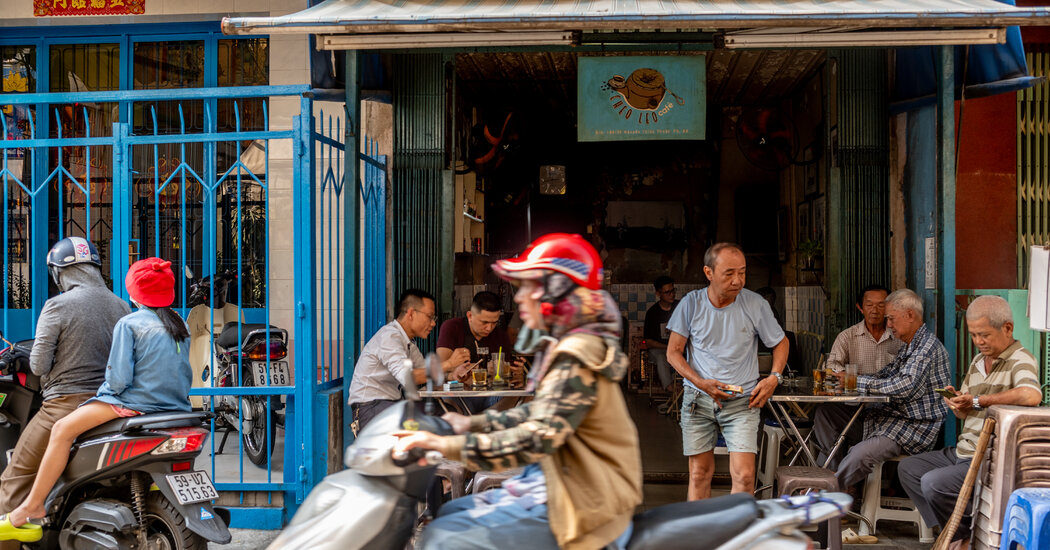Other than Brazil, no nation produces more coffee than Vietnam. Introduced by French colonists in the 19th century, the country’s coffee crop is now a $3 billion business and accounts for nearly 15 percent of the global market, making Vietnam the java giant of Southeast Asia.
Quality, however, has only recently begun to catch up with quantity, mainly because farmers have begun augmenting Vietnam’s longtime cultivation of cheaper, easy-to-grow robusta beans with a connoisseur’s favorite, arabica.
A major beneficiary has been the cafe scene in the country’s largest metropolis, Ho Chi Minh City (a.k.a. Saigon). Thanks to direct crop-to-shop supplies, the retail business of coffee is booming as increasing numbers of indie roasteries and specialty coffeehouses sprout up around the city’s French colonial opera house, amid the megamalls and boutiques of fashionable Dong Khoi Boulevard, and in the shadows of the high-rise towers in District 2.
Given the exceptional bitterness and caffeine wallop of most robusta beans, it’s little wonder that the Vietnamese have traditionally softened their coffee with a thick dollop of sweetened condensed milk, creating an almost milkshake-like concoction.
For your initiation into this national classic, head to this humble hole-in-the-wall, the oldest existing cafe in town, in a low-lying, off-the-radar pocket of District 3 not far from Nguyen Thien Thuat Street, known for its musical instrument shops. Here, the stoic Madame Suong and her two sisters perform the ritual that their family has been practicing since the 1930s.
As sentimental Vietnamese pop songs echo off the sky-blue walls, tiles and peeling ceiling, the women work under a single bulb in the small kitchen, filling hand-held cloth nets with a mix of robusta, arabica and culi (also called peaberry) grounds and passing them through boiling pots of water heated by a charcoal fire in a repurposed American oil drum. After a second pass through the water — stored a few days beforehand in vast clay pots to allow impurities to sink to the bottom — the potent brew is then poured into highball glasses and mixed with condensed milk.
If the result (25,000 Vietnamese dong, or about $1) still isn’t sufficiently creamy for your taste, ask for a special…
Click Here to Read the Full Original Article at NYT > Travel…
